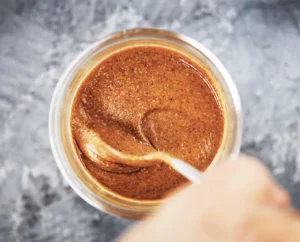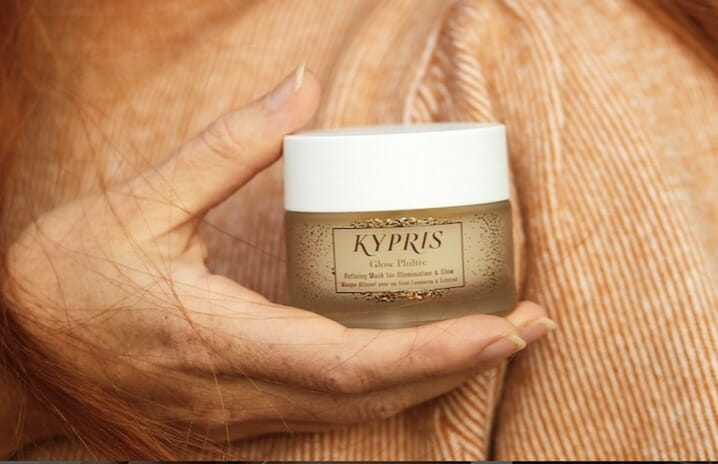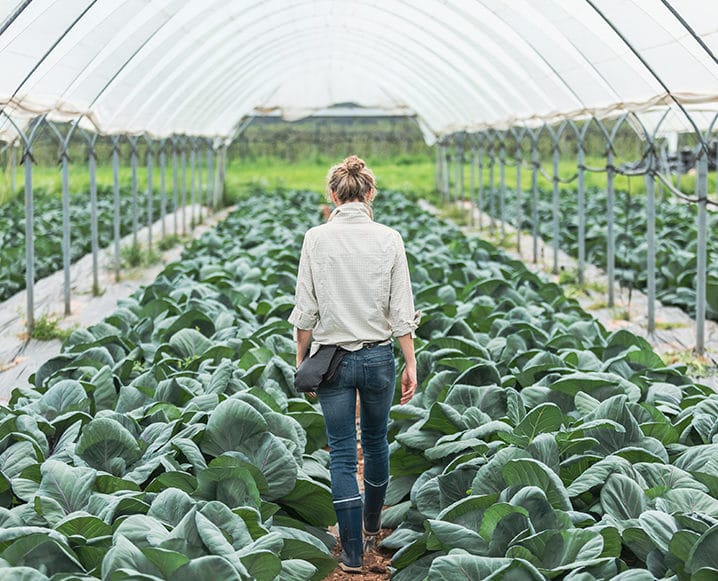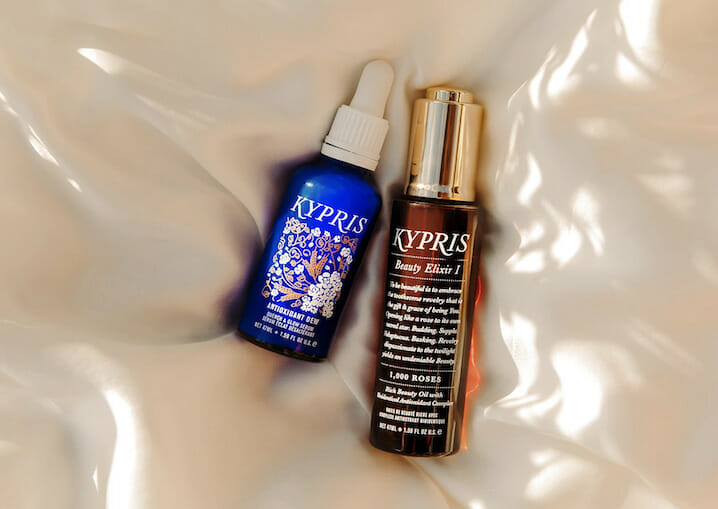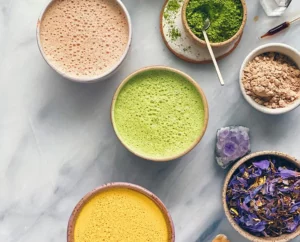
Adriana Ayales is the clinical herbalist behind NYC’s Anima Mundi. This timely piece on support for the feminine through herbs, plants and self-care is just what's needed...
The use of pharmaceuticals for pregnancy, fertility, hormone regulation, menopause, and more, has become excessive in modern day history, and not without risks. While a wide array of pharmaceuticals and allopathic practices have been a lifesaver to many, it is vital that we integrate holistic practices that can help prevent a wide array of side effects, potential complications, and are supportive to our wholeness—mentally and physically.
Millions of women suffer from uterine fibroids, PMS, PCOS, endometriosis, fertility ISSUES, menopausal problems, hormonal concerns, and more. And sadly, many common medications that treat these common imbalances cause a wide array of harmful side-effects.
I’m a huge advocate of integrating the best of both worlds, and work with the laws of harmony personalized to each and every body to find wholeness. Rather than approaching a one-size-fits-all mentality with medications, or even herbs and dietary protocols, it’s important to take your health back and approach your body holistically, like a garden.
The herbs and practices below are an invitation to educate, recognize, and deepen your connection to the Earth. These self-care tools are here to assist you in developing the skills needed to prevent and potentially treat common health conditions that arise along the journey of the feminine body.
Today we are featuring popular herbs that have served many across centuries, and can be useful add-ons to your current routines. This is just the tip of the iceberg of herbal medicine for women. Please be mindful and dive deeper combining with other prescription medications. Although most here are generally safe, please consult your herbalist, healthcare practitioner, midwife and/or doctor to better asses what’s right for you and your unique body type.
10 Helpful Herbs For The Womb, In All Its Stages
1. NETTLE—Nettle is one of Nature’s greatest multivitamins. Rich in nutrients, minerals and high in iron, Nettle is deeply nourishing to all body types. It is particularly useful to the womb pre- and post-cycle, for fertility, for postpartum, after birth, and in the case of a miscarriage. Nettle may also support kidney health, may clear urinary tract infections and is incredibly effective at reducing seasonal allergies. Nettle can be enjoyed in many ways. You can ingest fresh (or dried) as a tea, as a food, as a tincture, or as an extract powder. You can treat it as if it were a stinging kale, and make all sorts of delicious dishes, teas, broths, and beyond. For pregnant mamas, use glycerite tinctures when choosing liquid extracts.
2. RED RASPBERRY LEAF—The red raspberry is a unique medicinal food with a rich history. Extensive historical papers note how wild berries were collected in the wild and were a primary food amongst many cultures around the world. In medieval Europe, wild berries were used for medicinal purposes and their juices were used for paintings and as ink for manuscripts. Raspberries are high in several powerful antioxidant compounds, including vitamin C, quercetin, ellagic acid, containing a variety of other nutrients, such as magnesium, potassium, vitamin K, calcium, and iron. Red Raspberry leaf is an herb commonly used during pregnancy, and studies show that it might not only improve the outcome but it reduces the possibility of medical intervention. Although it’s not technically a pain-reliever, the leaves have helped a myriad of women in labor, those dealing with PMS, premenstrual bloating, heavy period flows, and endometriosis. For best results, try using the fresh leaves, or fresh dried. If not available, enjoy it as a tea or tincture. For pregnant mamas, use glycerite tinctures.
3. SHATAVARI—A beloved adaptogen native to India. Used for centuries in Ayurveda for women in all stages of life, as it’s an adaptogenic super tonic for the womb. Shatavari is immensely helpful in curbing physical and psychological stress often associated to hormonal imbalances and reproductive disorders. It helps balance sluggish menstruation or a heavy flow. Based on existing studies, Shatavari may improve general reproductive health, assisting with complications such as PCOS, follicular growth and development, infertility. Shatavari has been successfully used to increase fertility, as a galactagogue, for vaginal dryness, hot flashes during and around the onset of menopause, and for supplementation post-menopause. May be ingested as a tea, capsule, tincture or in food. For pregnant mamas, use glycerite tinctures when choosing liquid extracts.
4. BLACK COHOSH—One of my all time favorite plants for womb care in all stages of life. This precious herb, has gained immense popularity as it’s often used as hormone replacement therapy, to support women during menopause, with few adverse effects. It is often used for symptoms of menopause, premenstrual syndrome (PMS), PCOS, painful menstruation. Although often associated as an herb for women, Native Americans have used it for as wide array of purposes for centuries, such as: colds, rheumatism, kidney disorders, menstrual disorders, to induce labor, lactation and more. Black Cohosh helps alleviate symptoms of hot flashes, sleep disorders, body pains, irritability, and mood swings. Recommended as a tea, tincture, or capsule. For pregnant mamas, use glycerite tinctures.
5.MORINGA LEAF—Did you know that Moringa has 7x more vitamin C than oranges, and 15x more potassium than bananas? This nutrient-dense medicinal food also has protein, iron, amino acids, vitamin A, vitamin B6, B2, Iron, Magnesium, B2, and more. To say they are nature’s multivitamin is an understatement! Moringa is also a natural galactagogue, assisting mamas and mamas to be in milk production. Enjoy fresh or as a powder and incorporate into food, beverages, and beyond. A super tasty green powder that can be enjoyed even as a latte!
6. VITEX (Chasteberry)—This powerhouse of a berry not only is a powerful women’s health ally, it is also known to boost memory, learning and cognition. Vitex directly enhances the function of the pituitary gland, which is a primary gland that regulates hormone secretion. It’s used as a fertility aid, and is safe to use in the first stage of pregnancy for miscarriage prevention if there is a history of miscarriages. Discontinue use of this herb past the first trimester, unless you are following a protocol with an experienced herbalist or doctor. Vitex is a galactagogue, stimulates milk production, can help bring back menstruation for women suffering from amenorrhea, may help with PMS, PCOS, fertility challenges, irregular menstrual cycles, and menopause symptoms. Best in tincture or capsule form. For mamas in early pregnancy enjoy as a tea.
7. DONG QUAI—Sometimes called “female ginseng,” Wild Yam helps cramping, irregular menstrual cycles, infrequent periods, PMS, any menstrual and muscle cramping, and menopausal symptoms. This potent women's herb has the ability to support the regulation of estrogen levels—whether they're too high or too low—strengthening the uterus, improving uterine tone, and regulating the menstrual cycle. In Chinese Medicine, it has been shown to improve red blood cell count, which is helpful after menstruation to replenish rapidly. For those with sluggish periods, Dong Quai is said to relieve stagnation that may often lead to PCOS, endometriosis, ovarian cysts and uterine fibroids. Best as a tincture or root decoction.
8. ADAPTOGENIC MUSHROOMS—Ah, the world of fungi! Mushrooms are some of humans' greatest medicinal foods. Medicinal mushrooms offer a wide variety of healing benefits and are packed with nutrients.
Adaptogenic mushrooms in particular are vital for immune strength, immune protection, resilience, and are generally safe in small doses during pregnancy. Enjoy them as a food, particularly in the 2nd and 3rd trimester.
Mushrooms such as turkey tail, agaricus, lion’s mane, shiitake, maitake, oysters, chaga, cordyceps, reishi, and other culinary mushrooms are excellent to incorporate into the diet. Mushrooms, like many of the medicinal herbs mentioned today, are packed with vital nutrients, which much of the food of today lacks. Vitalism is something we must narrow in on, and make sure we get enough of, as they are essential building blocks for our mind-body resilience overall. Enjoy them in soup as a mushroom broth, or as a tea. If pregnant, ingest in small and moderate doses in foods, soup, smoothies, warm beverages etc. For regular maintenance, enjoy as broth, soups, as a tincture, decoction, or extract powder.
9. MILKY OATS Are an excellent "tropho-restorative," a category of herbs that are highly nutritive and restorative, revitalizing many organ systems. Milky Oats, or Oat Straw, is a superb tonic for anyone looking to decompress and nourish the nervous system, as well as revitalize and recover from weakness of deficiency. It has a soothing, calming effect on the body and can gently support balanced moods. Milky Oats also greatly supports irritable bowels (IBS), heart burn, inflammation in the gut, and restless nerves. Ingest as a fresh tincture or in our Calm Tea. For pregnant mamas, use the tea for optimal effects.
10. RED CLOVER—Red Clover is perhaps one of Nature’s greatest multivitamins, as it contains calcium, vitamin C, beta-carotene, whole spectrum B vitamins, and essential trace minerals such as magnesium, zinc, copper, selenium, and manganese.
According to master herbalist Rosemary Gladstar, “Because of Red Clover’s phytoestrogens, it is commonly used by women to support common menopausal symptoms such as hot flashes, mood swings, and night sweats. The isoflavones in Red Clover appear to bind with estrogen receptor sites, preventing certain forms of estrogen such as estradiol and/or excess estrogen from accumulating.”
Red Clover is often used for fertility, and as a tonic to prepare the uterus for pregnancy. Its signature red flowers look like red blood cells, signaling its key healing powers, which is to purify and mineralize the blood. Studies also demonstrate it to be an effective galactagogue as it stimulates prolactin secretion, therefore increasing milk production. Best taken as a tea or fresh herb tincture. For pregnant mamas, use glycerite tinctures.
3 Ancient Rituals For Self-Love
Self-care is a birthright, not a luxury. Many of the rituals below are inspired by ancient traditions that practiced self care to return the body to its original healthy state. Self care rituals weren’t practiced solely to diagnose a specific symptom, or to look good – the general aim was to re-enliven life force in the body, the very essence of our health and well-being. There are many ways you can practice self care, from jumping into a body of water, to sitting in silence, to a walk in nature, or a simple foot massage. The practice of filling your own cup daily allows you to be more present and thrive.
1. SELF MASSAGE—In modern Western culture we consider a massage to be a special treat, but for many healers in the East, Africa, and in Latin America, massage was and is a daily practice to free the body of stagnation.
In Latin America for example, there are specific shamans called “sobaderos” that literally heal through moving, agitating, or massaging the body. This is believed to free the body of what I would call somatic impressions, memories, and emotional programming.
In Eastern, African, and Latin American traditions, there is a common ritual where women get daily massages for a period of days, or up to forty days (also called "cuarentena") after giving birth. This is often done by a midwife, doulas, or family members.
In modern day reality—where we all live busy lives and don’t always have family nearby—we have become accustomed to massages being an expensive luxury. Therefore a great alternative, if you’re seeking this therapy, is self-massage, which can be equally as effective.
To practice self-massage:
+ Apply warm oil generously to your body, beginning with your limbs. Use long strokes on your arms and legs, and circular motions on your joints. Massage clockwise to release tension, and include areas like your neck and under your arms to target lymph nodes.
+ Massage your abdomen and chest in broad clockwise, circular motions. Follow the path of the intestine on your stomach, moving up on the right side, then down on the left.
+ Apply oil to your crown, working outward in circular motions.
+ Dip your fingertips in the oil and massage your ears.
+ Massage your feet, but make sure to wipe off the oil before you walk.
+ Throughout the massage, send loving intentions to your organs and show gratitude to your body for everything it does for you.
+ Allow yourself enough time so that the oil soaks into your skin before you dress.
If you don’t have time for a full massage, you can always do a foot massage before bed. Try it with warm oil, or thicker oils like shea butter or even mallow, for deeper hydration.
2. HERBAL BATHS—Baths are deeply cleansing and can enhance physical and mental energy, remove negativity, and relax your body and mind. They’re also a wonderful way to soak up the deeply therapeutic medicine of essential oils and other good-for-the-skin ingredients. If you’re a cold plunger, enjoy a cold bath this summer. This is known to greatly restore the nervous system and activate the almighty parasympathetic nervous system for rest and restoration. For those of you that love warm baths, make a big pot of tea using your herbs of choice. Add these into your bath for an extra cleansing effect. Incorporate epsom salts, magnesium salts, or essential oils of preference, to exalt the therapeutic activity.
3. BANOS FLORALES—This is different from bathing, and involves pouring flower water, ceremonially, over your head to cleanse and purge the physical and psychic bodies. In Latin American traditions, shamans prepare flower waters by using spring water, and adding in flowers that match the vibrational feel of what they sense for you and your life path. This can be as detailed as the amount of petals, flowers, and colors present. A prayer is recited to the water, and then poured over the person's head gently. This practice purges the body of psychic stagnation, and seals the aura with the vibrational power of flowers.
The post 10 Helpful Herbs For The Womb In All Its Stages appeared first on The Chalkboard.
from The Chalkboard https://ift.tt/WULmHd1
via IFTTT


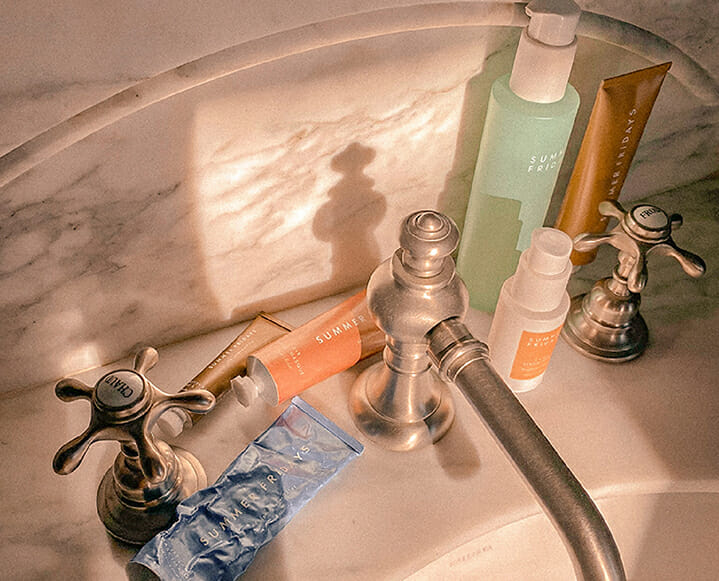

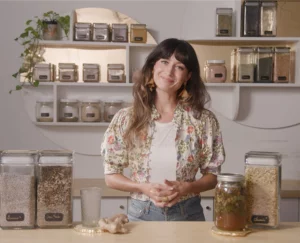

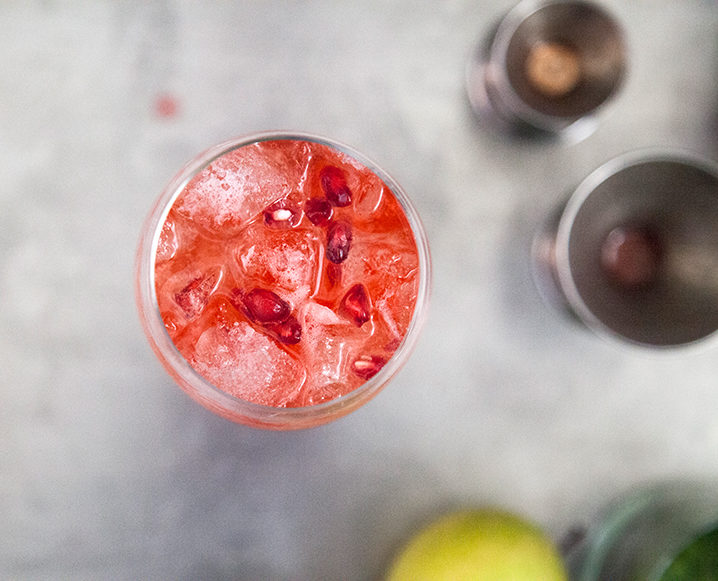 The effects of food on our health are clearer and more widely communicated all of the time. I’m optimistic that the current state of affairs resembles where we were with alcohol not so long ago. While still nascent and niche, the
The effects of food on our health are clearer and more widely communicated all of the time. I’m optimistic that the current state of affairs resembles where we were with alcohol not so long ago. While still nascent and niche, the 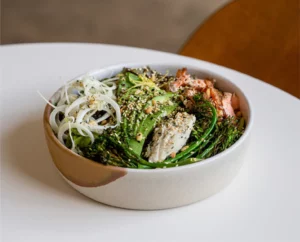
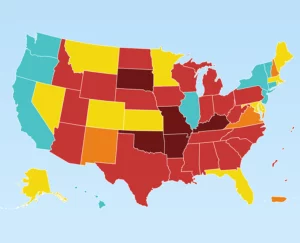
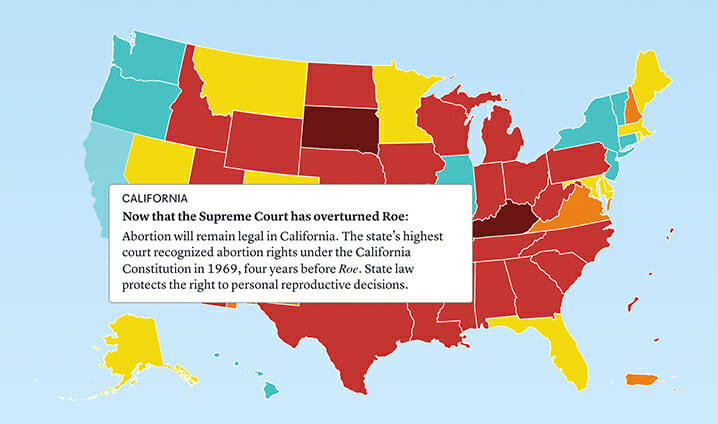





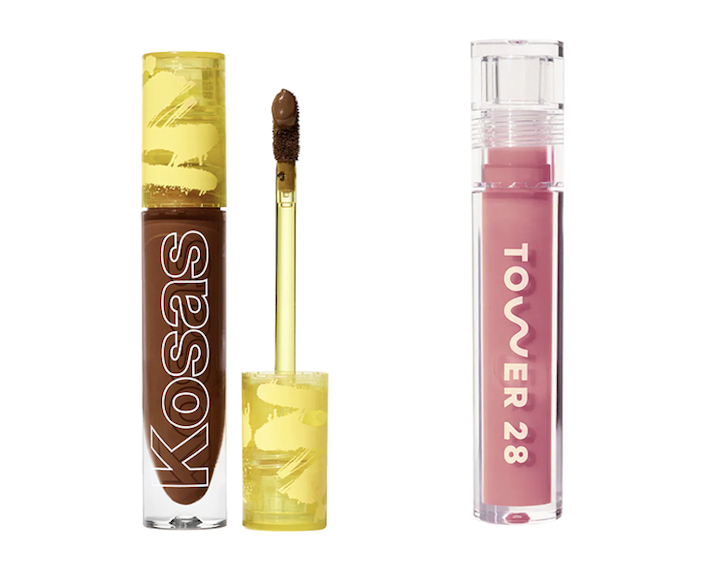
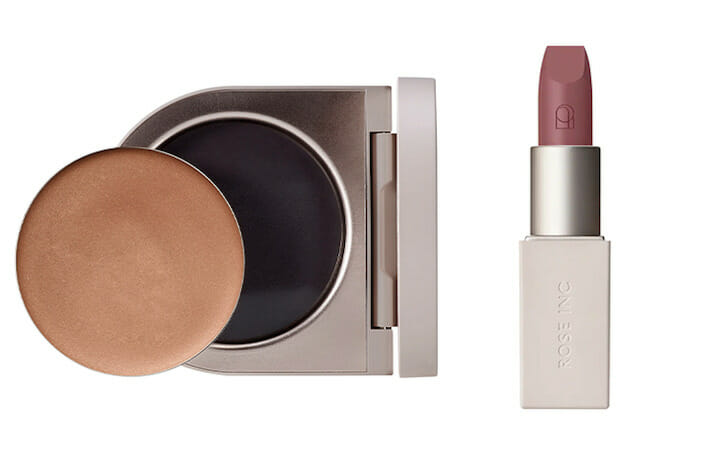
 Bite Beauty The Lip pencil
Bite Beauty The Lip pencil RMS BEAUTY
RMS BEAUTY ILIA
ILIA KOSAS
KOSAS Lashfood Chamomile makeup eraser
Lashfood Chamomile makeup eraser AETHER BEAUTY
AETHER BEAUTY